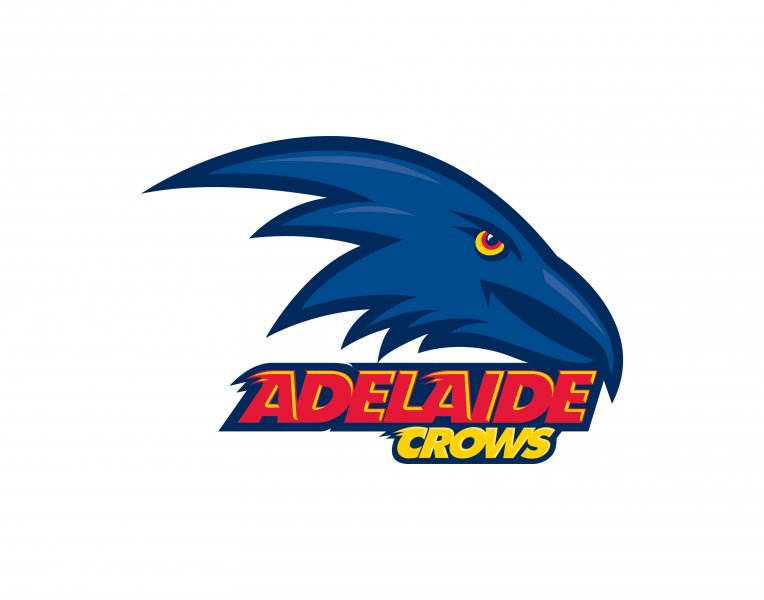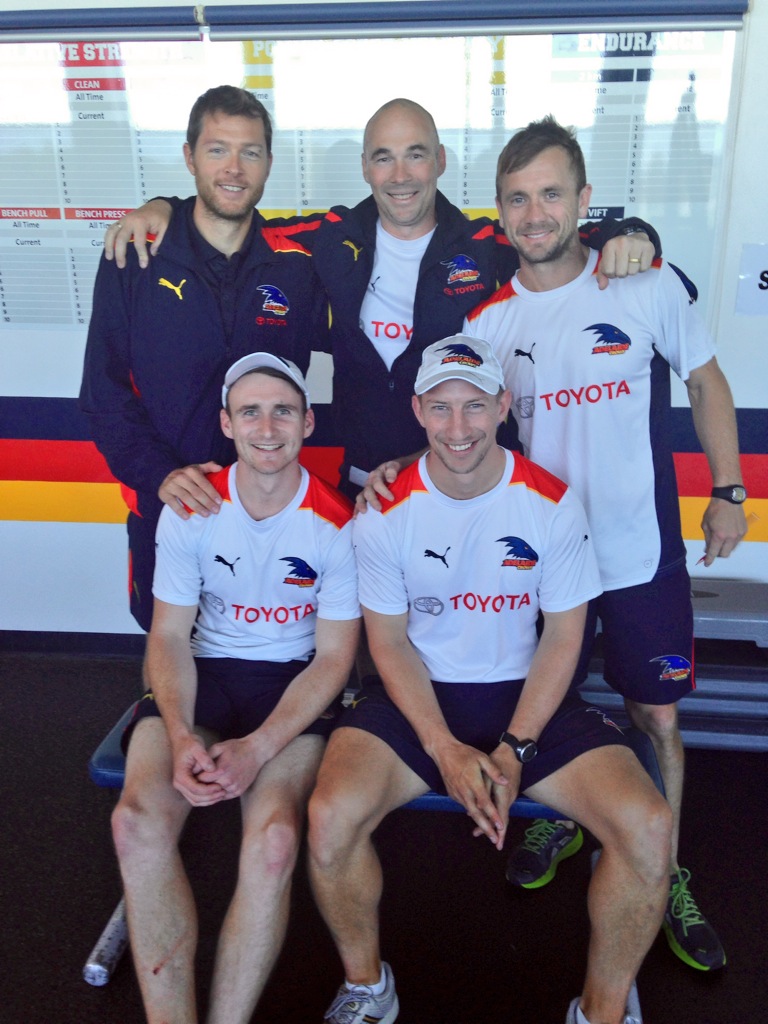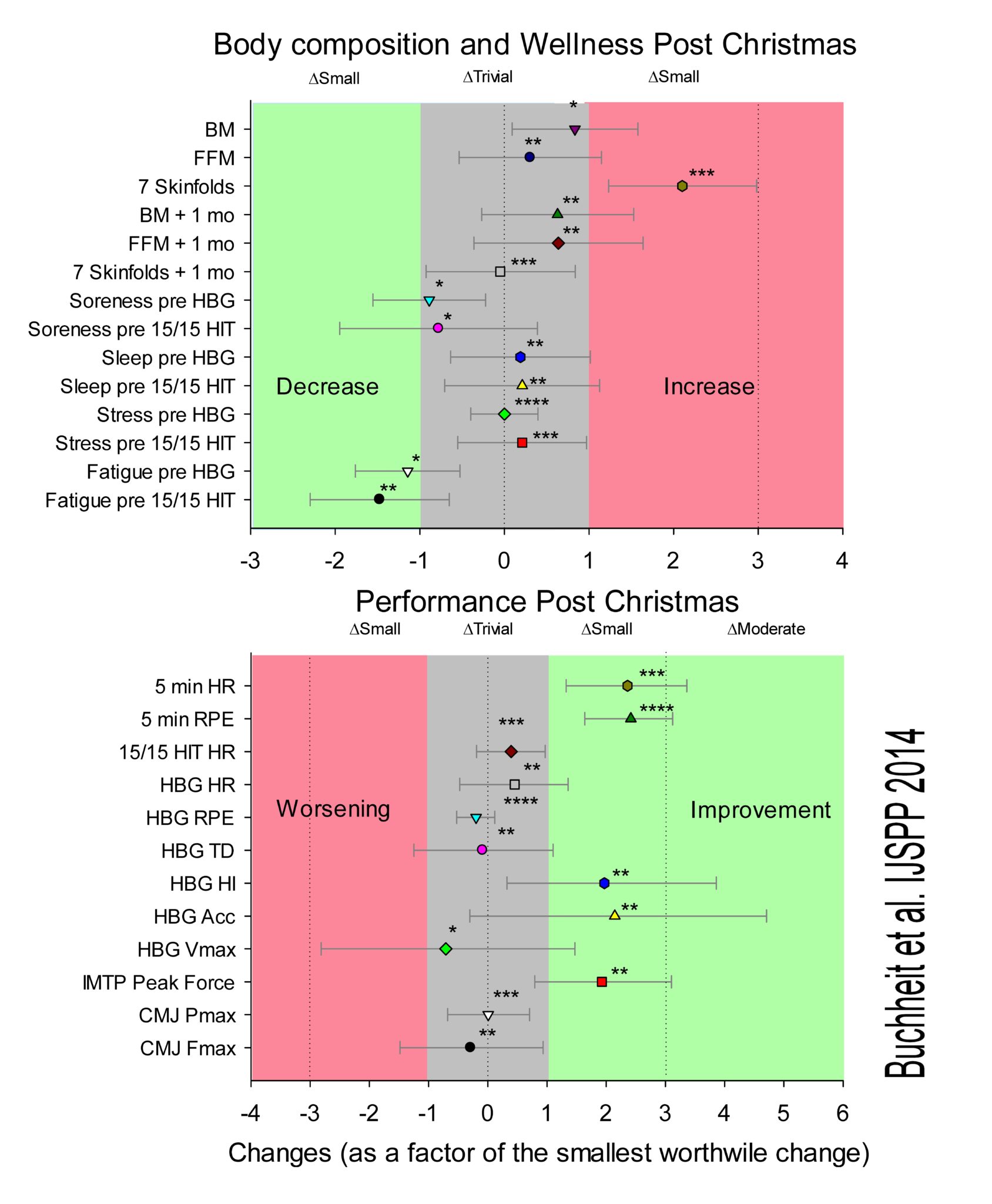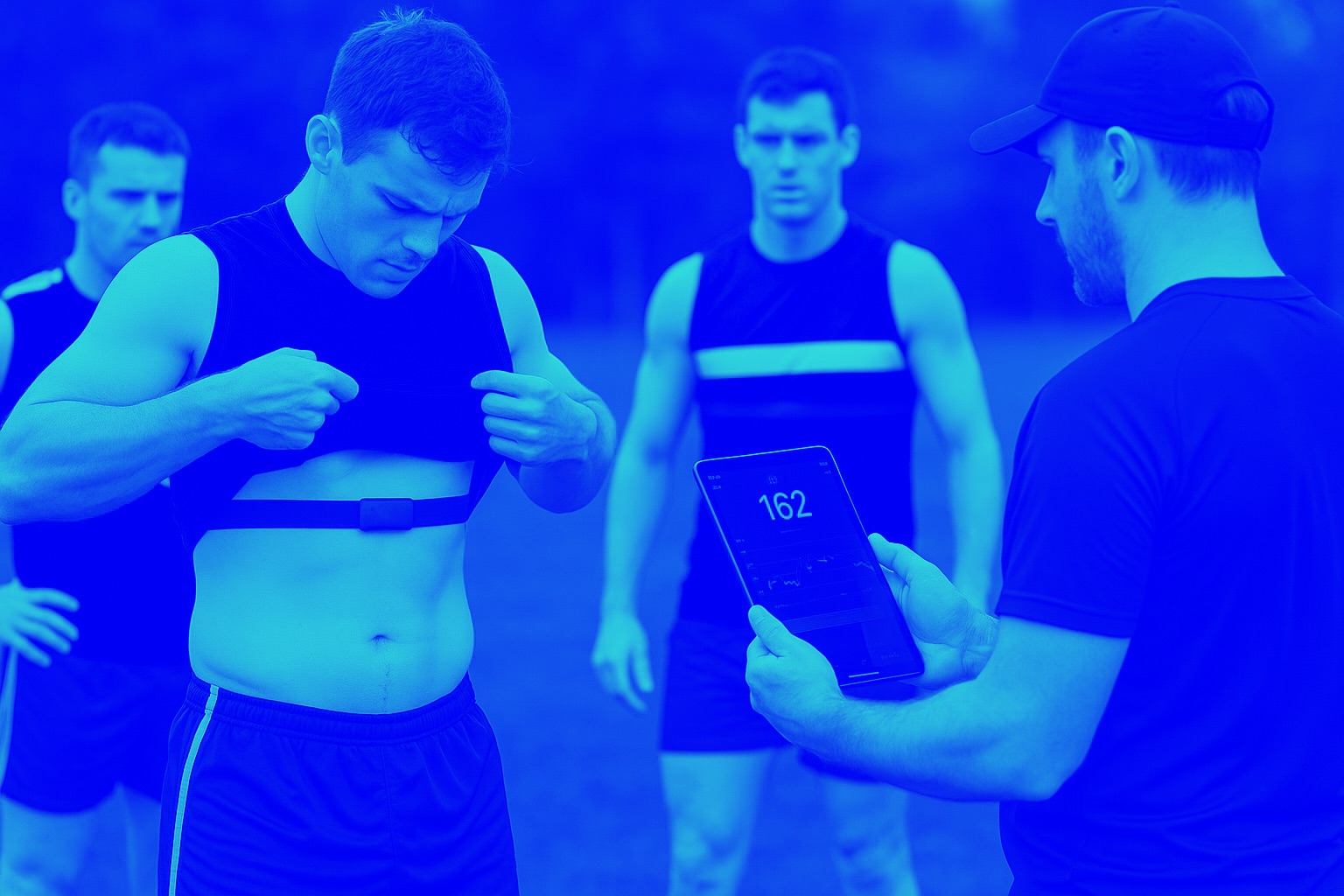Physiological, psychometric and performance effects of the Christmas break in Australian Football
 Buchheit M, Morgan W, Wallace J, Bode M, and Poulos N. Physiological, psychometric and performance effects of the Christmas break in Australian Football, 2014, IJSPP, In press.
Buchheit M, Morgan W, Wallace J, Bode M, and Poulos N. Physiological, psychometric and performance effects of the Christmas break in Australian Football, 2014, IJSPP, In press.
[Project initiated in November 2013 / data collected in December 2013-January-Feb 2014 / Paper submitted in March 2013 / Accepted 13th of April 2014 – Thanks IJSPP !]
Purpose. The aim of the present study was to quantify the physiological, psychometric and performance effects of a 2-week Christmas break in a professional Australian Football League (AFL) club.
Methods. A series of physiological (e.g., heart rate (HR) response to a 5-min submaximal run and skinfolds thickness), psychometric (rate of perceived exertion (RPE) responses and wellness variables) and performance (running activity during standardized handball games, isometric mid-thigh pull (IMTP) peak force and counter movement jump (CMJ) measures were conducted in the weeks before and after the break.
Results. There was a possible and small increase in the sum of the 7 skinfolds, whilst body mass and free fat mass remained possible and likely unchanged, respectively. Sleep and stress scores remained likely-to-almost certainly unchanged, but there were some small, possible-to-likely decreases in fatigue and soreness scores. HR and RPE responses to the 5-min submaximal run were likely slightly lower (i.e., improved) after the break. High-intensity running and acceleration distance during a standard handball game were very-likely slightly greater, while HR and RPE responses to the game were possibly-to-very likely unchanged. HR responses to a high-intensity training session remained very likely unchanged. There was also a likely small increase IMTP peak Force, but likely-to-very likely no change in CMJ variables.
Conclusions. Our results show that players returned from a 2-week break during pre-season well recovered, with preserved to improved levels of strength and cardiorespiratory fitness, despite small increases in skinfold thickness.
Key words: detraining; periodization; monitoring; heart rate; acceleration, iso-pull.
 Follow @PoulosNick, @Willmorgan4 and @JarrydWallace7
Follow @PoulosNick, @Willmorgan4 and @JarrydWallace7





Fábio Nakamura
Nice paper mate. Suggest you to measure the recovery associated with no-match weekend vs. match weekend. We have some pilot observations showing that passive weekend is able to increase HRV and reduce stress symptoms in handball players.